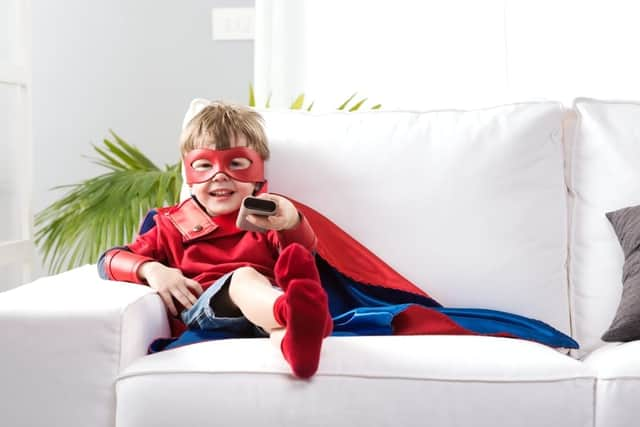Kids learn gender stereotypes from TV and magazines


Ditching gender stereotypes in children's TV shows and magazines will encourage kids to be more open-minded about how they play, research suggests.
Youngsters are more likely to play with the opposite gender if they're shown more diverse imagery, a study showed.
Advertisement
Hide AdAdvertisement
Hide AdAnd they are also more accepting of other children playing with toys which aren't typically linked to their gender when stereotypes are scrapped.


Psychologists who carried out the study say it proves gender preferences - like the idea boys prefer cars - can be influenced by exposure to television and media.
The team asked children to pick toys and a playmate after looking at 'counter-stereotypic' images and discovered they became more open-minded with play.
Study lead Lauren Spinner, a PhD student at the University of Kent, said: "Regular exposure to counter-stereotypic content in the media could be an effective strategy to promote gender flexibility and combat gender-related bullying.
Advertisement
Hide AdAdvertisement
Hide Ad"Play style was used as a guide, more so than the playmate's gender."


Flexible attitudes
The researchers say the study, published in the journals Sex Roles, suggest it is possible to shift children toward 'more gender flexible attitudes'.
Some 82 British children aged four to seven were divided into two groups for the study.
Half were shown a photograph of a boy playing with a car, and a girl with a toy pony, while the scenario was reversed in pictures shown to the other group.
Advertisement
Hide AdAdvertisement
Hide AdSpeech bubbles on the photographs and a sentence read out by the researchers hinted the children featured were playing with their favourite toys.
Children were then given a set of toys to choose from and asked who they thought should play with them.
They were asked who from the photographed children they'd like to play with and why, as well as whether, and for what reason, they would exclude certain children from joining in.
Shutterstock
In the stereotypical scenario, 91 per cent of girls opted to play with a same-gender playmate - compared with half (50 per cent) in the group shown reverse images.
Advertisement
Hide AdAdvertisement
Hide AdMeanwhile 94 per cent of boys shown stereotypical images chose same-gender playmates, compared with 55 per cent in the group shown reversed images.
Children still generally chose stereotypical toys but the researchers said they were more accepting when others picked non-typical toys.
Ms Spinner said: "Participants did not demonstrate more gender flexible attitudes in their own preferences for gender-typed toys - i.e., girls preferred feminine toys and boys preferred masculine toys - after exposure to counterstereotypic content.
"However, participants in the counterstereotypic condition did demonstrate more gender flexible attitudes toward the toy play of other boys and girls, labeling masculine toys and feminine toys as appropriate for both boys and girls more often than participants in the stereotypic condition."
Advertisement
Hide AdAdvertisement
Hide AdShe added: "Presenting children with images of counter-stereotypic peers through magazines could be used to encourage children to play with a variety of toys, play in mixed-gender groups, and reduce gender-based social exclusion and bullying for both gender-typical and gender-atypical children."
The team hopes building on the research can prompt educators, parents and policy makers to change the way children are exposed to ideas.